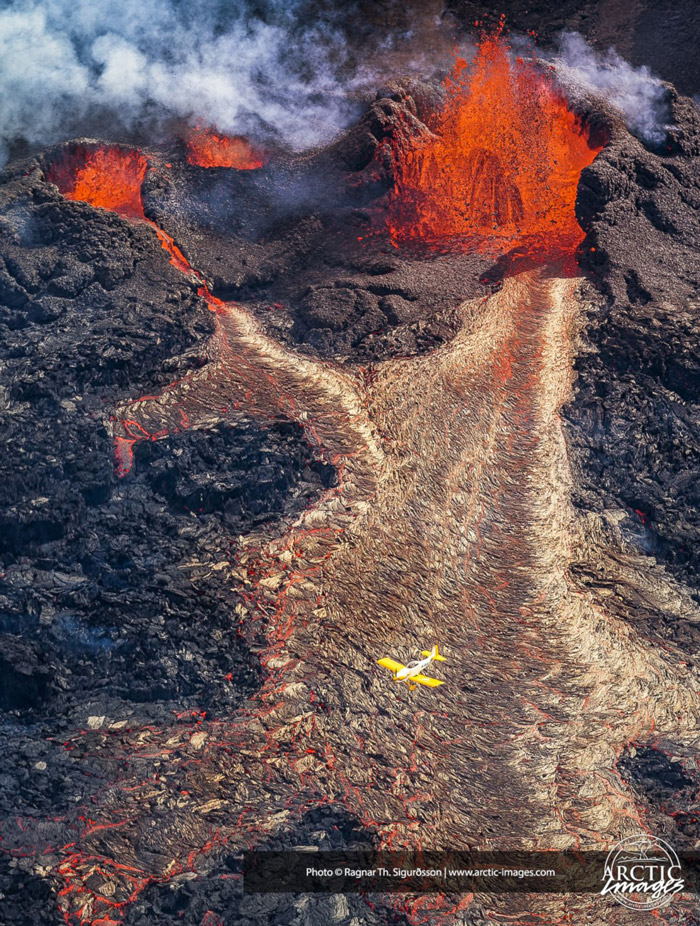Fire Fountain #1
Sep 15, 2014
 Tectonic drama is vividly on display these days in central Iceland, where the trailing edges of two continental plates–the North American and Eurasian plates–are tearing the island apart.
Tectonic drama is vividly on display these days in central Iceland, where the trailing edges of two continental plates–the North American and Eurasian plates–are tearing the island apart.
The Atlantic Ocean is growing wider and wider, at an average rate of about an inch a year. The seafloor bulges upward in the middle, where the tectonic plates meet, and cracks develop in the bulging ridge. These fissures fill up immediately with magma squirted up from deep below the earth's crust.
When the magma erupts at the surface–at which point it's called lava instead of magma–it cools and hardens into new rock, lodged in between the edges of the two old plates. This process, called rifting, pushes the plates further and further apart.
Iceland is one of the few places on earth where rifting is visible above the water. The fissure eruption currently active near a large old volcano called Bardarbunga is not particularly explosive–no threat to airplanes at the moment–and it is occurring in an unpopulated area where there is little risk to people or property. In fact, the scene of the eruption is a desolate plain called Hohluraun, which is covered with old lava from ancient eruptions.
There is concern that the fissure may "unzip" back toward Bardarbunga, in which case the eruption could spread underneath hundreds of meters of snow and ice in Europe's largest glacier. Much of the glacier could be vaporized by the heat of the eruption, creating a massive steam explosion and ash cloud.
There is also concern that the lava erupting from the fissure is emptying out the old magma chamber underneath Bardarbunga volcano, which is the largest in Iceland. Ongoing earthquakes are readjusting the mountain as the partially empty magma chamber caves in on itself; if one of the earthquakes breaches the chamber, the explosion and eruption could become as large as any in recorded history. Bardarbunga's last eruption was the largest in the past 10,000 years.
But it won't be apocalyptic; it won't extinguish life as we know it. It will just darken the skies for a while and widen the Atlantic Ocean by a bit.
Or: the current fissure eruption could die down in a day or a month or a year, leaving central Iceland quiet and relocating the scene of the next tectonic drama to some other time and place.
 Icelandic authorities reported this week that the five-month-old volcanic eruption known as Holuhraun shows numerous signs of winding down, at least for the moment. They believe that volcanism in that part of the country is entering a new phase
Icelandic authorities reported this week that the five-month-old volcanic eruption known as Holuhraun shows numerous signs of winding down, at least for the moment. They believe that volcanism in that part of the country is entering a new phase